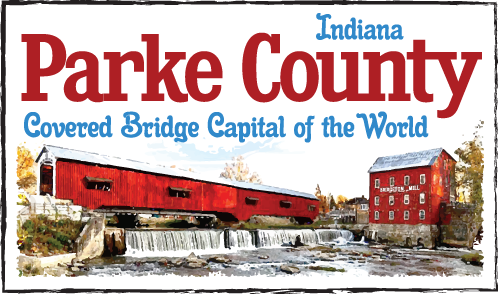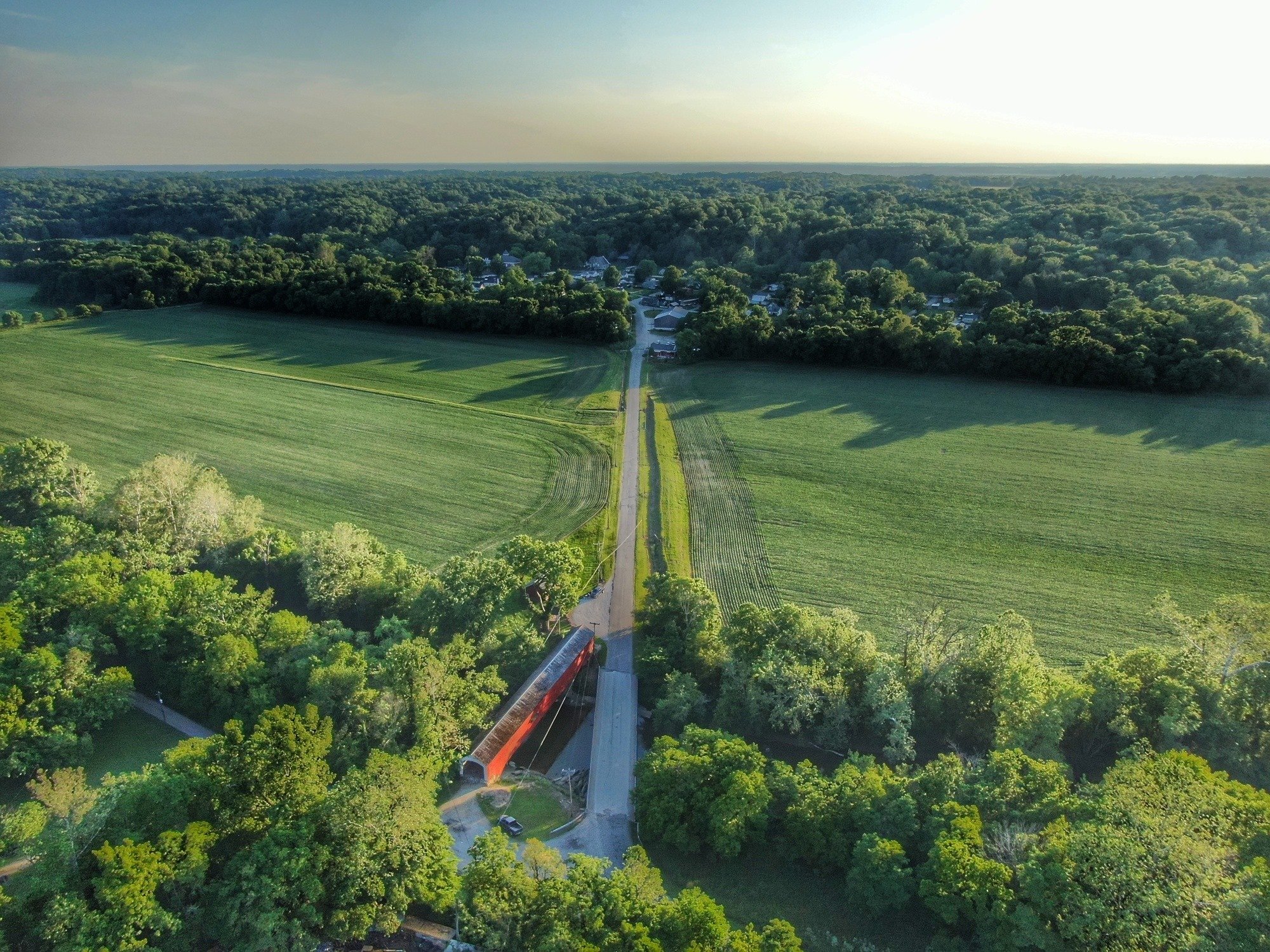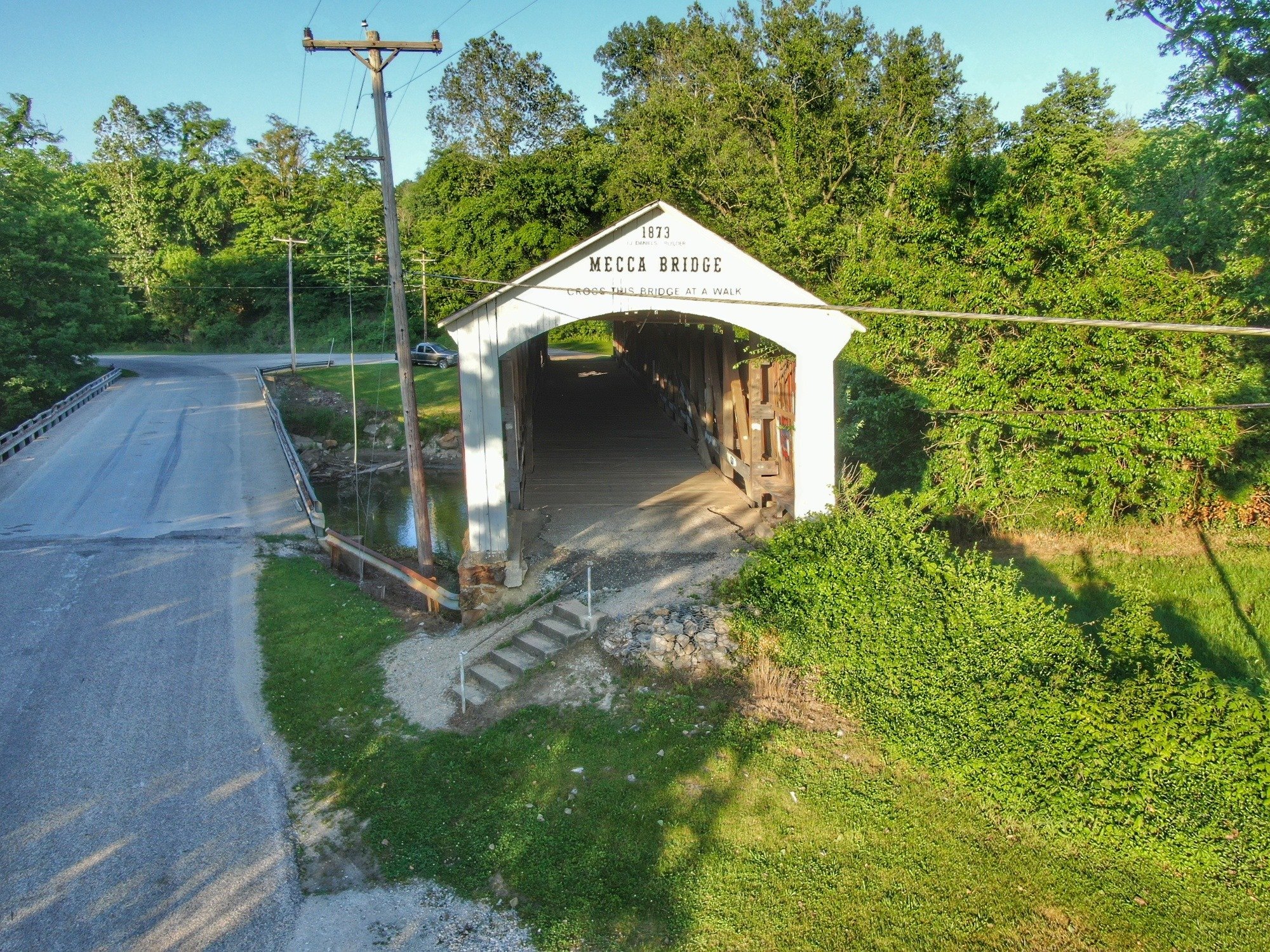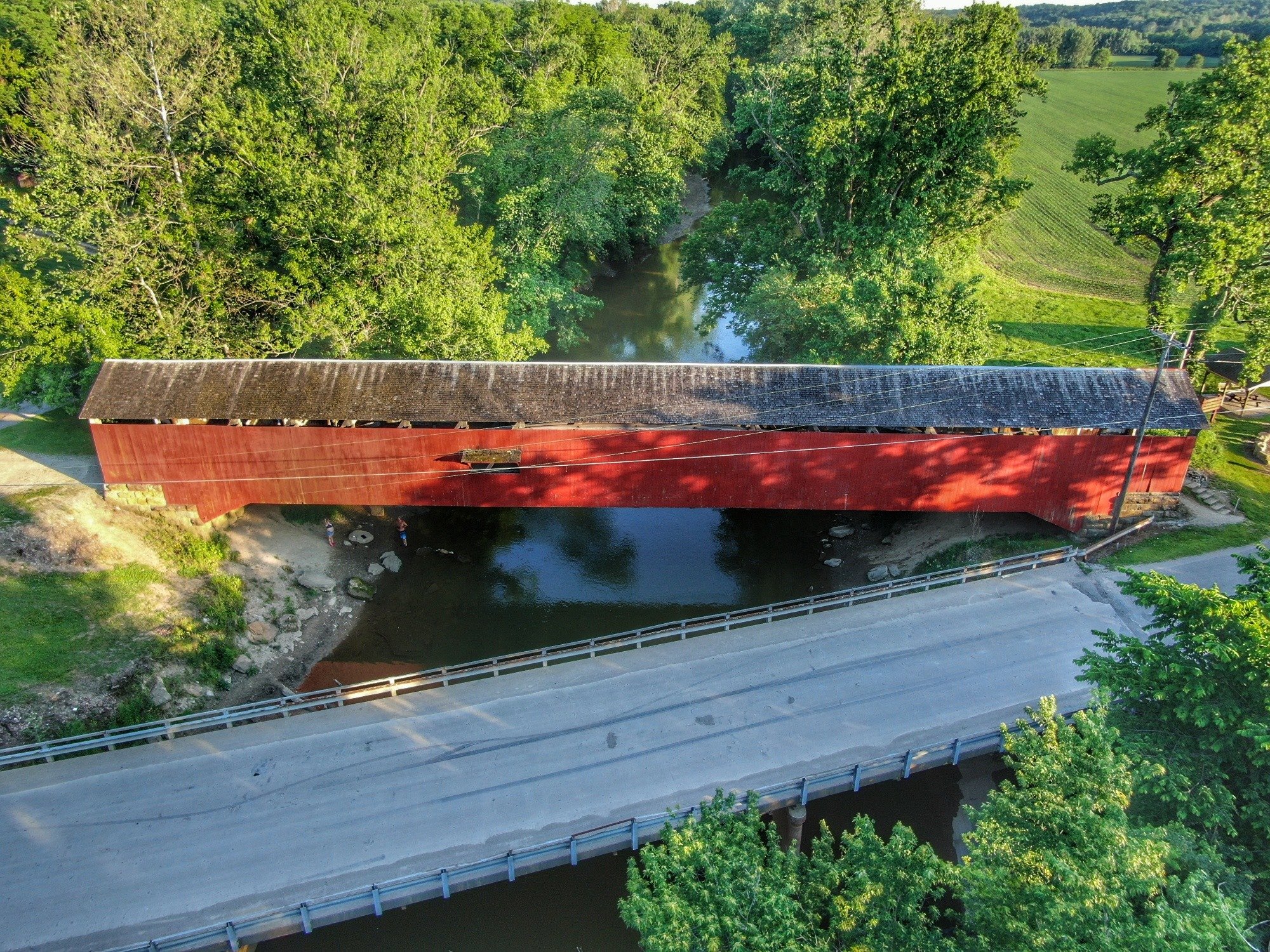Mecca Covered Bridge (#21)
Built: 1873
Builder: Joseph J. Daniels
Creek: Big Raccoon
Location: Located at Mecca. Also on "Brown Route"
Reference Code: #21, 14-61-13, 12-61-14, ec, Wabash 20-15N—8W
Size: 150 ft long +13’ +13’, 17 ft wide, 12’ 6
Truss: Burr Arch 1 span
Foundation: Hewn stone
Original Cost: $7,650
Repair/Restoration History: Bypassed in 1965. Funded June 30, 1980 to repair cable cradles.
Bridge History: The name Mecca was originally attributed to the city in Saudi Arabia that is a center to the Moslem faith. There are two stories about how Mecca, Indiana got its name.
An immigration of Syrian Moslems led to a settlement among the white sands and clay banks of the Big Raccoon. The settlement became known as Little Arabia or Arabia. The Arabian Church and the Arabian Cemetery were located on top of the hill, south of the Philips or Arabian Covered Bridge.
In a second story, "Arabians" was a name for second class citizens thought of as scoundrels and cattle thieves.
In either case the Arabians made trips to the larger town with a mill and stores that became known as pilgrimages. The name came from the expression, "There goes another caravan of Arabs on their way to Mecca!"
Earlier, the town was called Maidstone. Alexander McCune and Samuel Lowery built a sawmill on Big Raccoon in 1832. In 1833 they built a carding mill and in 1834they added machinery for fulling cloth. Jeptha Van Vickler built a sawmill in 1835. McCune and Lowery built flatboats and packed pork for shipment to New Orleans. In 1855 they built a flour mill in the area that became known as Old Mecca. Other owners included Frank L. Batman in 1860, George Batman in 1874, and John S. Hardin in 1897 when the equipment was sold and the building converted to storage.
When bids for the Mecca Bridge were opened, they included William Blackledge, $8,000; James Moyers, $7,800; and J.J. Daniels, $7,650. J.J. Daniels was awarded the contract.
From 1877 through 1879 a new gravel road was constructed between Rockville and Mecca. This increased traffic across the covered bridge. Today, US 41 uses most of the same route from Rockville to the church at Bradfield Corner. The road building reduced the building of other bridges during this time period to one.
New Mecca was built a half mile on the other side of the bridge. The Indiana Coal Railroad was built along the Big Raccoon Valley. West Mecca was started at the train station. The W.E. Dee Company operated two clay plants, started in 1895 and 1904, concurrently with the operation of the Indiana Sewer Pipe Company on the east side of Mecca. Nearly 300 were employed in these plants. A grain elevator and a steam powered sawmill were other businesses. The town population was around two thousand in 1900, a thousand in 1927, and 400 now. There were two hotels, two bakeries, a bank, a pool hall, a blacksmith shop, coal mines, a hardware store, a newspaper, four churches, etc. The Mecca Historical Society bought, moved, and restored a schoolhouse near the west end of the bridge. At Christmas, the bridge and schoolhouse are decorated. Christmas caroling is held in the bridge. A sunrise service is held in the bridge on Easter.
The bridge survived the floods of 1875, 1913, 1957, and 1990. The water rose above the floor in July 1957 and 1990. In another flood, two families waited it out inside the bridge, confident in J.J. Daniel’s construction.



